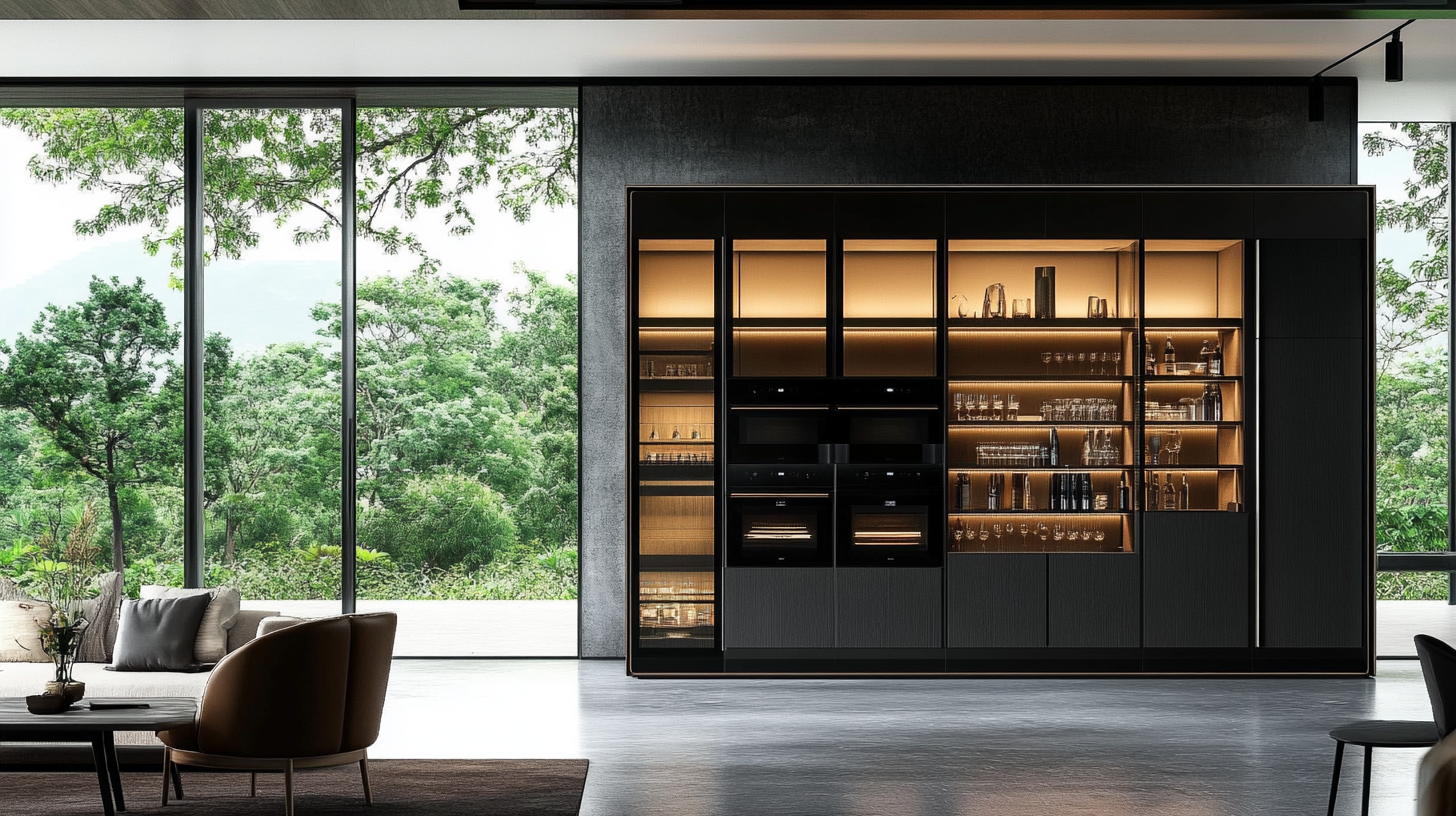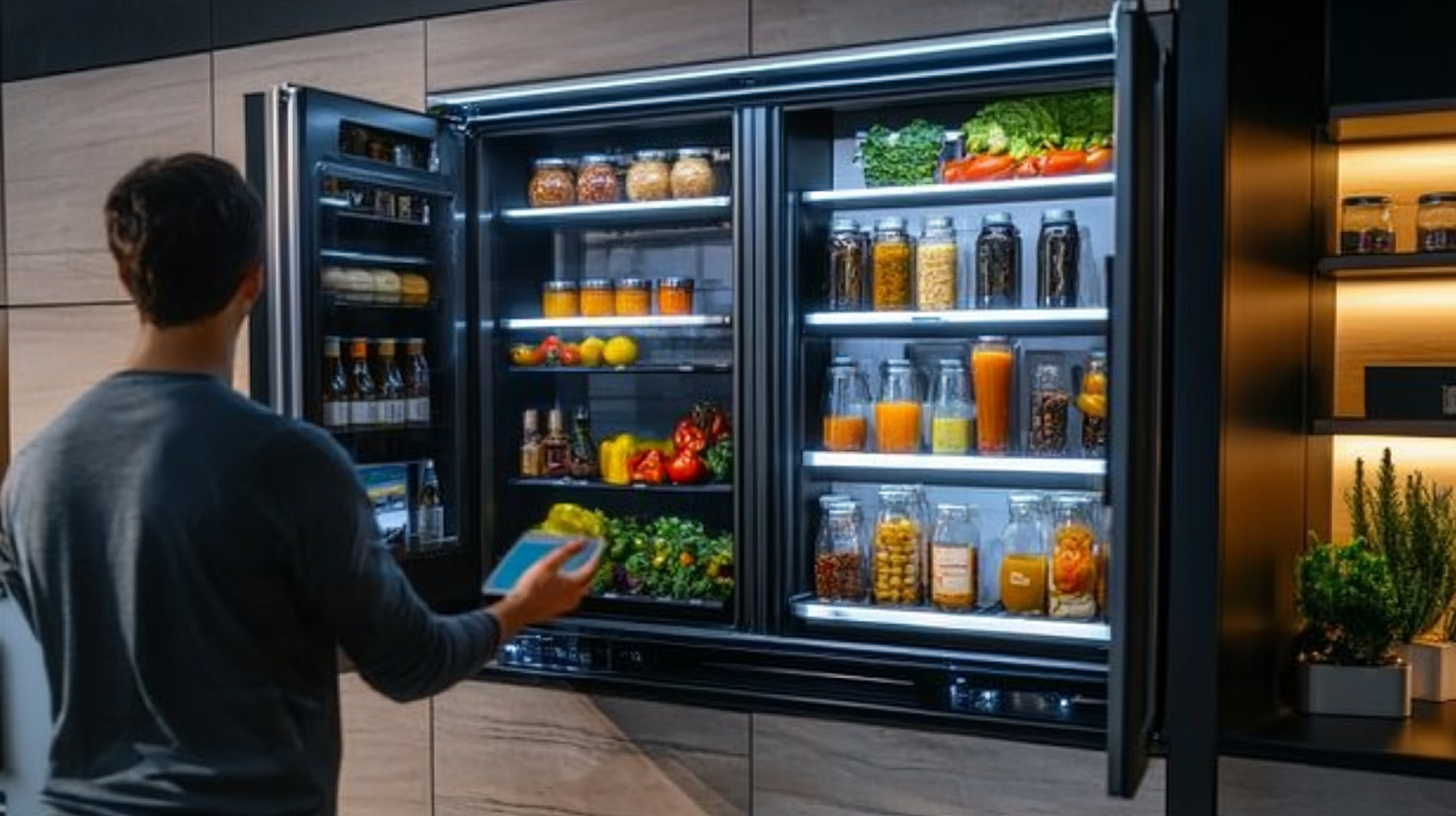Table of Contents
- Overview of Current Innovations in Electronic Cabinets
- Key Technologies Shaping the Future of Electronic Cabinets
- Sustainability Trends in Electronic Cabinet Design
- Market Dynamics: Demand and Supply Influences in 2025
- Future Prospects: Predictions for Electronic Cabinet Innovations
- FAQS
- Related Posts
By 2025, the world market appears very different. Among all other factors contributing to this changing scenario, electronic cabinets are crucial. These storage solutions serve an even greater purpose than housing the technology-they serve as the linchpin of modern business and home infrastructures. Integration of design, materials, and recent updates in technology into electronic cabinets is now leading to the emergence of new features that enhance intelligence, efficiency, and environmental friendliness. Increased demand from various industries necessitates keeping pace with the trends outlined in this blog, where we will look into developing trends that will reshape the future of electronic cabinets.
The importance of electronic cabinets goes far beyond their application; it has also been created towards constructing highly organized, secured, and accessible environments for essential electronics. Thus, any company that wants to maximize efficiency and also improve the way it looks will find most changes in the electronic cabinet design most attractive. Integrated smart systems and sustainable materials will certainly create features that match global sustainability goals yet satisfy the need for increased functionality. Join us in exploring these paradigm shifts and their effects on the future world of the electronic cabinet market.

Overview of Current Innovations in Electronic Cabinets
At present, the electronic cabinet market is witnessing mad rush changes which will include numerous things by the year 2025. Current innovations are mostly concentrated around the integration of some form of AI and, most likely, IoT, which would increase functionality and offer some form of user experience. Smart electronic cabinets are equipped with sensors and connectivity features that permit the users to monitor and manage devices even from a distance. This is indicative of real-time data analytics, and which, in turn, optimizes inventory management and reengineers operations. This is also because cloud computing is becoming a design factor for electronic cabinets. Businesses seeking scalable but flexible solutions can now go for electronic cabinets made to their specifications at much cheaper rates than traditional technologies. Such innovations are meeting the rising demands for efficient and reliable systems made possible by the blossoming e-commerce sector. As these technologies become operational, electronic cabinets will advance in various industries where they will use productivity and complicate maintenance.

Key Technologies Shaping the Future of Electronic Cabinets
The electronic cabinet industry, shortly just before 2025, is ushering in critical technologies that could change its very face. Innovations in artificial intelligence and cloud computing feature prominently in allowing manufacturers to better the functionality and the user experience. In this line, AI-driven predictive analytics can optimize inventory management by ensuring that electronic cabinets are stocked with the products that lead the market demand at any one time.
Moreover, the coupling of advanced data intelligence technologies allows for much more efficient working of systems. Using cloud solutions to achieve real-time data access enables companies to fast-track their decision-making processes. These changes ensure smoother business operations while reacting to the most recent market trends, thereby keeping electronic cabinets smarter and better responsive to customer requirements. The area of integration advanced into the future, which will surely shape the way electronic cabinets are considered in the global market, seems extremely bright as they increasingly integrate cutting-edge technology.

Sustainability Trends in Electronic Cabinet Design
Environmental friendliness is becoming a key factor in the design of electronic cabinets in correspondence with the increasing global thrust towards sustainability. As advancements unfold, manufacturers are looking at ways to incorporate recycled components and energy-efficient methodologies that help mitigate their carbon footprint. This trend goes hand in hand with changing consumer behavior towards sustainable products, thus enforcing businesses to either comply or risk being eliminated from the market.
Besides using sustainable materials, the design of electronic cabinets has diverted into smart technologies to further enhance energy efficiency. Some of these innovations incorporate optimized cooling systems and automation to regulate their power consumption according to demand. Companies are further analyzing data to track their progress in sustainability initiatives, ensuring that the product not only fits user demand but also serves a greater purpose in leaving a positive impact on the environment. These trends towards 2025 will characterize a shift in an industry that increasingly encompasses performance and environmental responsibility.

Market Dynamics: Demand and Supply Influences in 2025
As we walk into 2025, the most important changes in the electronic cabinet market are emerging innovations. The global electronics demand is around creating electronic cabinets, spurred by rapid advances in AI and cloud computing whereby enhanced functionality and user experience are possible. All these lead manufacturers to develop their products with artificial intelligence accelerators to provide intelligent and efficient electronic solutions for today’s tech-savvy users.
The dynamics of supply have also been changing. There are basic infrastructure who have begun exploiting international cloud technologies to produce again. Furthermore, the expansion of e-commerce has maximally encouraged the full facilitation of online organizing in terms of leading markets in terms of innovations in electronic cabinets. Electronics cabinets go beyond storage, including smart features catering to lifestyles today and thereby mimicking the industry's responses to consumer behaviors in a digitally driven economy.
Future Prospects: Predictions for Electronic Cabinet Innovations
The outlook for electronic cabinets is projected to witness a sea change by 2025, spurred on by the enhancement of these gadgets from technology advancements and consumers' unprecedented demands. One of the most sought-after trends is the way cabinets are endowed with smart features to augment user experience and ease of use. For example, advanced electronic cabinets are proving to be the foremost elements in the smart home phenomenon, heralding new avenues of productivity dovetailing with high- quality evolution in the home appliance industry.
In addition, regulatory compliance and consumer safety constitute one of the most influential aspects while deciding the design and functions of an electronic cabinet. Some of the recent innovations are smart display units that are compliant with the industry and provide different branding options for e-cigarettes and other products. As industries have begun gearing themselves towards conforming to stringent regulations, it is becoming more important to have intelligent and secure storage systems that will ensure proper management of stock and interaction with clients.
FAQS
Innovations in artificial intelligence and cloud computing are at the forefront, enhancing functionality and user experience through predictive analytics for inventory management and real-time data access.
Manufacturers are increasingly focusing on using recycled materials and energy-efficient processes, aligning with consumer preferences for sustainable products and reducing their carbon footprint.
Future electronic cabinets are expected to incorporate smart technologies that enhance user experience, such as optimized cooling systems and automation that adjusts power usage based on demand.
Companies leverage data analytics to monitor sustainability efforts and improve operational efficiency, ensuring products meet consumer needs while contributing positively to the environment.
Advanced electronic cabinets are emerging as crucial components in smart homes, enhancing user convenience and opening new productivity avenues in the home appliance industry.
Recent innovations include smart display units designed to comply with industry standards, facilitating secure and intelligent storage solutions for products while enhancing inventory management.
Manufacturers are focusing on sustainable materials and energy efficiency in their designs to meet the growing demand for environmentally friendly products.
The landscape is expected to transform through the incorporation of smart features and more adaptive designs that align with consumer demands and regulatory requirements.
Companies are utilizing cloud solutions for real-time data access, enabling quicker decision-making and more responsive business operations.
The focus on sustainability will lead to an industry that prioritizes both performance and ecological responsibility, driven by innovative technologies and consumer expectations.
Blog Tags:
- Power Cabinets
- Motor Control Cabinets
- Electronic Enclosures
- Industrial Control Cabinets
- Custom Metal Cabinets
- Server Cabinets
- Rack Mount Enclosures
- Outdoor Electrical Cabinets